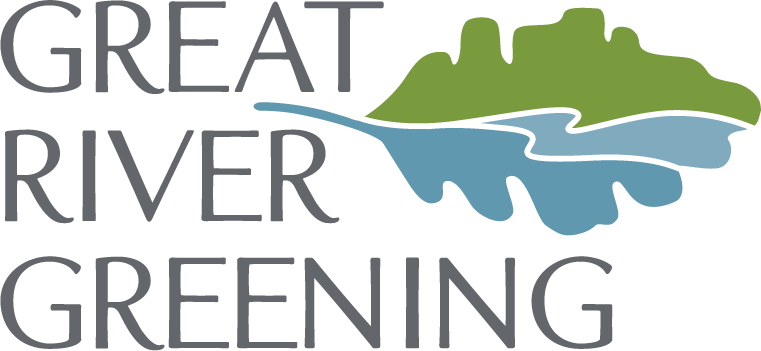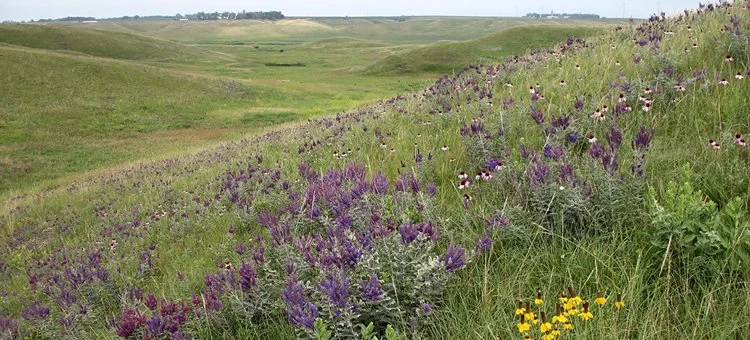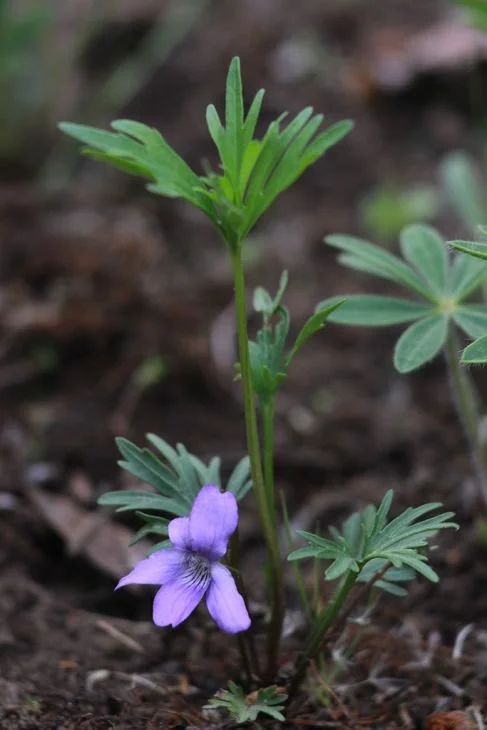Minnesota's Native Prairies: Protecting and Restoring a Vanishing Landscape
This month, we’re talking with Kristy Cowdin, Ecologist and Project Manager at Great River Greening, to learn more about the history, urgency, and impact of prairie conservation in Minnesota. With deep experience in land restoration and a passion for native ecosystems, Kristy is helping lead the charge to bring Minnesota’s prairies back to life.
At the heart of this work is a commitment to ecological resilience, cultural connection, and community-led restoration. Through her leadership, Great River Greening is working to restore the health of native prairies—and the relationships between people and land.
Read on to learn more from Kristy about the history of Minnesota’s prairies—from their glory days to their decline—and what Great River Greening is doing to restore this beautiful and vital landscape.
The Glory of Minnesota's Prairies: A Once-Abundant Landscape
Minnesota’s landscape was once a sweeping sea of native prairie grasses, wildflowers, and wildlife, spanning over 18 million acres across the state. These prairies were more than just beautiful—they played a vital role in supporting healthy ecosystems, wildlife, and human communities. But today, just 23,500 acres—less than 1% of the original prairie—remain. Now more than ever, protecting and restoring historical prairies is critical—and Great River Greening is committed to that mission.
In the 1800s, prairies teamed with life. Native grasses like big bluestem, Indiangrass and switchgrass reached towering heights, creating a dense, diverse ecosystem. Wildflowers such as butterflyweed, prairie clovers, and ox-eye sunflowers painted the land in bursts of color, providing food and habitat for a host of wildlife species.
“Iconic wildlife such as bison and elk roamed freely, shaping the landscape and helping maintain habitat for other species like the prairie chicken, meadowlark, and prairie skink. It was a landscape built on cooperation and adaptation.”
-Kristy Cowdin, Greening ecologist and project manager.
The benefits went far beyond wildlife. Deep-rooted grasses anchored the soil, reduced erosion, filtered water, and supported a complex ecosystem of underground life. And beneath the surface, those roots quietly acted as powerful carbon sinks—storing carbon and helping to buffer against climate change.
The prairies were—and remain—deeply meaningful to Indigenous peoples, especially the Dakota communities like the Mdewakanton, Wahpekute, Sisseton, and Wahpeton, who lived along the Minnesota River and were active stewards of the prairie, using fire to maintain its health and biodiversity.
The Decline: A Loss of Vital Ecosystems
The decline of Minnesota’s prairies began in the 1800s, when European settlers arrived and quickly converted vast stretches of grassland into farmland. Crops like wheat and corn replaced native, nearly 99% of the state’s original prairies had vanished.
The loss was severe.
Bison and prairie chickens were hunted to near extinction. Many native plants—like the western prairie-fringed orchid, dwarf trout lily, Hill’s thistle, and Sullivant’s milkweed—became rare. Without the deep-rooted grasses, erosion and run-off increased and soil health was significantly compromised.
“There are many species of native Minnesota thistles which are immensely valuable in the prairie ecosystem, especially for native pollinators” Kristy notes. “Each of these plants supports a web of life, and when we lose them, we lose the species that depend on them too.”
Dozens of other species—regal fritillary butterflies, meadowlarks, bobolinks, burrowing owls, and even tiny mammals like the Plains pocket mouse—have been nearly eliminated from the prairie landscape.
This ecological collapse was compounded by the forced displacement of Indigenous communities —leaving a profound and lasting impact on the land.
The Urgency of Prairie Conservation
Despite the alarming decline, there is still hope. Greening is leading conservation efforts across southern Minnesota—in Nicollet, Brown and Redwood counties, as well areas in Le Sueur County—as part of a larger initiative within the Minnesota River Watershed.
Prairie Violet
With financial support from the Lessard-Sams Outdoor Heritage Council, we’re expanding restoration and enhancement of the prairie ecosystem on public lands. This includes removing invasive species, tree removal, enhancing species diversity, and restoring oak savannas. One exciting project includes planting nearly 10,000 prairie violet plugs to support the DNR’s future reintroduction of the regal fritillary butterfly on the 1,300-acre Lamberton Wildlife Management Area in Redwood County.
And we’re just getting started. We’re proud to partner with the Minnesota Land Trust, which is focused on acquiring conservation easements in this region to protect these landscapes for future generations.
A Call to Action
As Kristy and the team continue their work across Minnesota’s prairie region, one thing is clear: this is a critical moment for native prairies. The decisions we make today will shape the health and resilience of these ecosystems for decades to come.
“There’s still time to protect and restore what remains,” adds Kristy. “But it takes all of us—scientists, landowners, and community members—to make it happen.”
You Can Make a Difference
You have the power to help us protect and restore Minnesota’s prairies. Spread the word about the importance of these ecosystems, educate others about their value, and get involved in local conservation efforts.
Together, we can ensure that Minnesota’s native prairies continue to thrive for generations to come.






